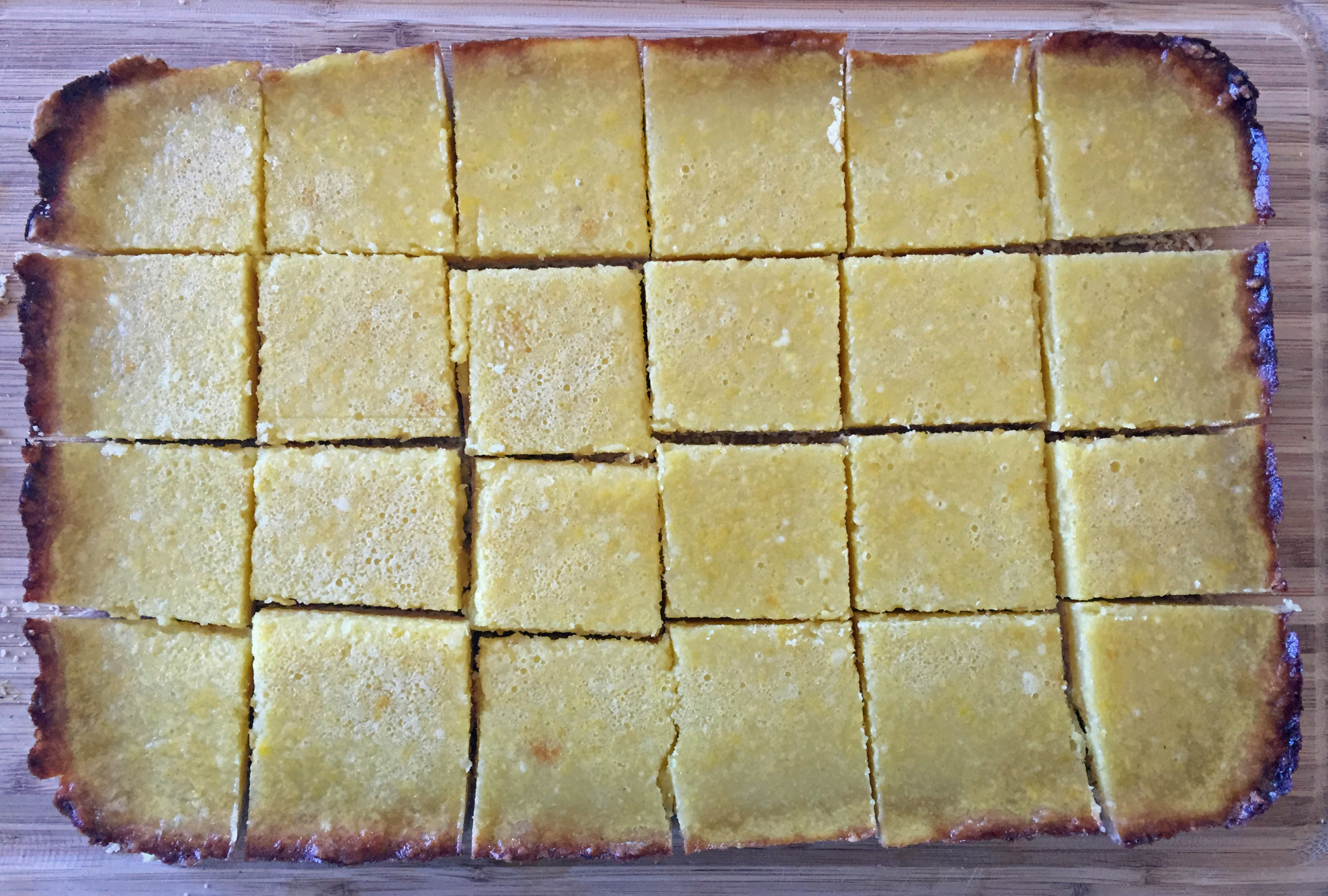Besides producing delicious lemon bars, this recipe for Classic Lemon Bars from the Food Network is also a great opportunity to think about geometry and numbers. The recipe makes 24 bars, and we’re supposed to bake the whole thing in a 9 by 13 inch pan. All this seems easy enough, but then how exactly do we cut the whole “cake” into 24 roughly equal squares? And they do have to be close to squares, since the shortbread crust is very flaky, and a long rectangular shape is likely to break apart when you pick it up.

24 pieces means that we need to cut the “cake” into a grid that’s either 2×12, 3×8, or 4×6. Let’s evaluate each type of grid to see which gives us final pieces that are approximately square. If we do a 2×12 grid, then the dimension of the pieces will be 9″/2 × 13″/12, which is roughly 4.5 by 1 inch. That’s very far from a square. Next, we consider a 3×8 grid. This will give us pieces that are 9″/3 × 13″/8, which are about 3 by 1.5 inches, still not a square. If, however, we use the 4×6 grid, we will get pieces that are 9″/4 × 13″/6 or approximate squares that are just over 2 inches on the side:

If you are familiar with ratios and agebra, we are seeking numbers a, b such that
- a× b=24
- 9″/a≈13″/b or, equivalently, b/a≈13/9.
Since 13/9≈1.5, the only whole numbers a, b that satisfy both of the above conditions are 4 and 6.
